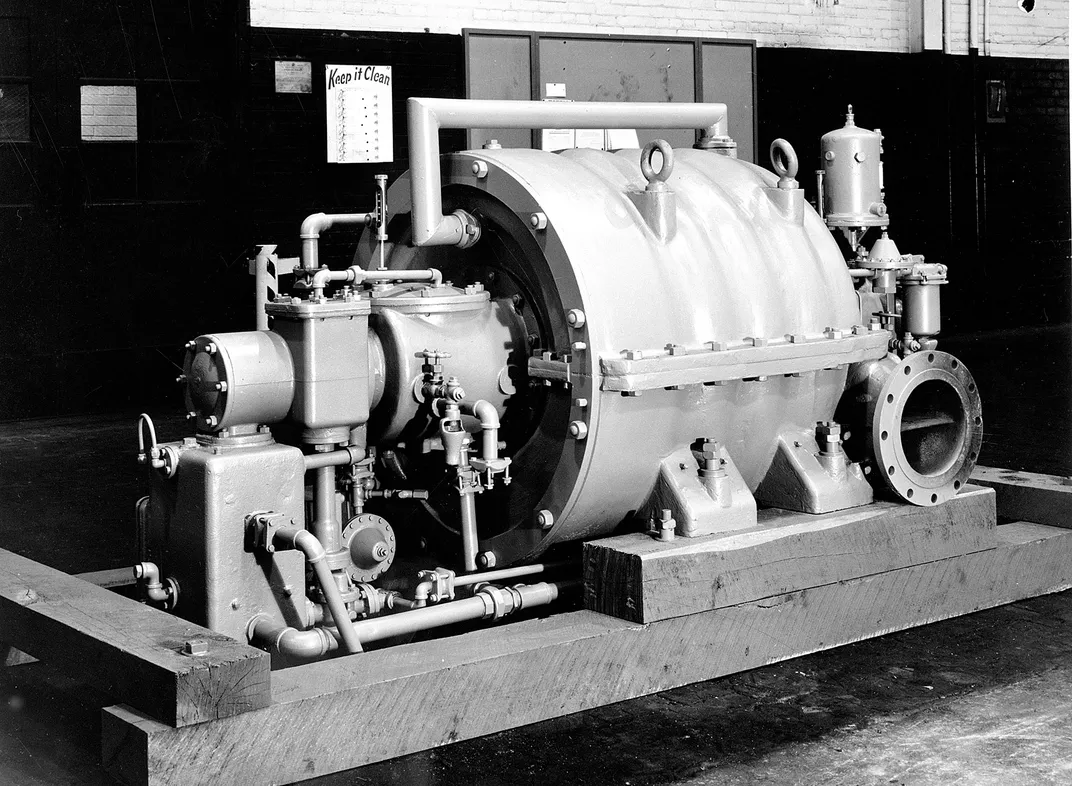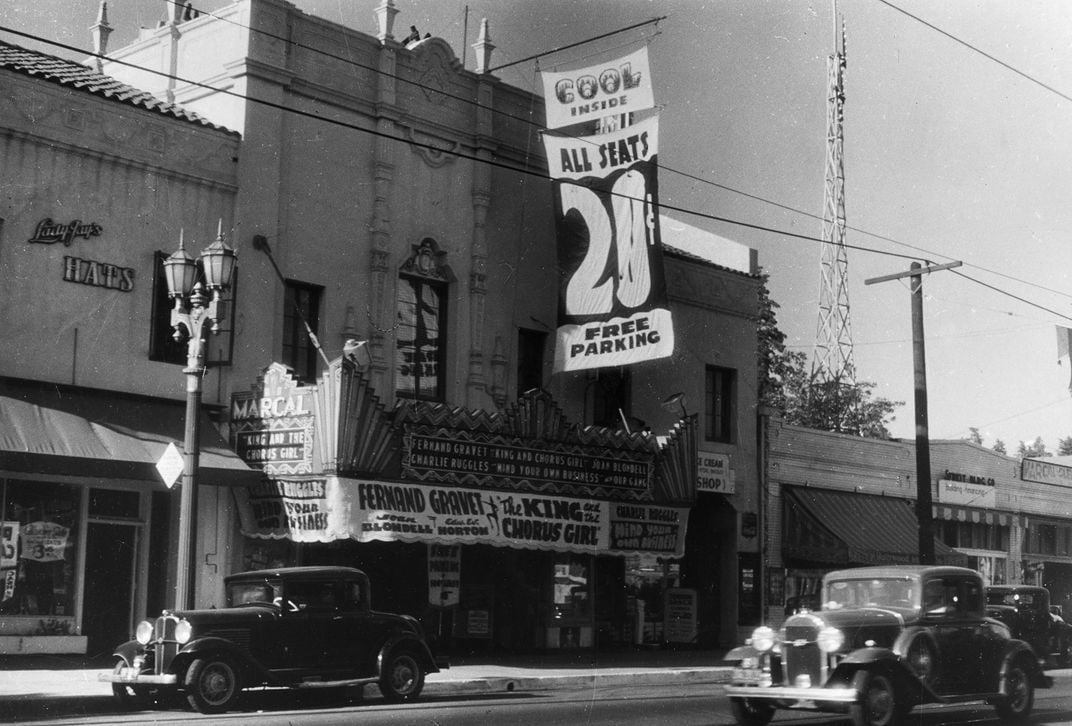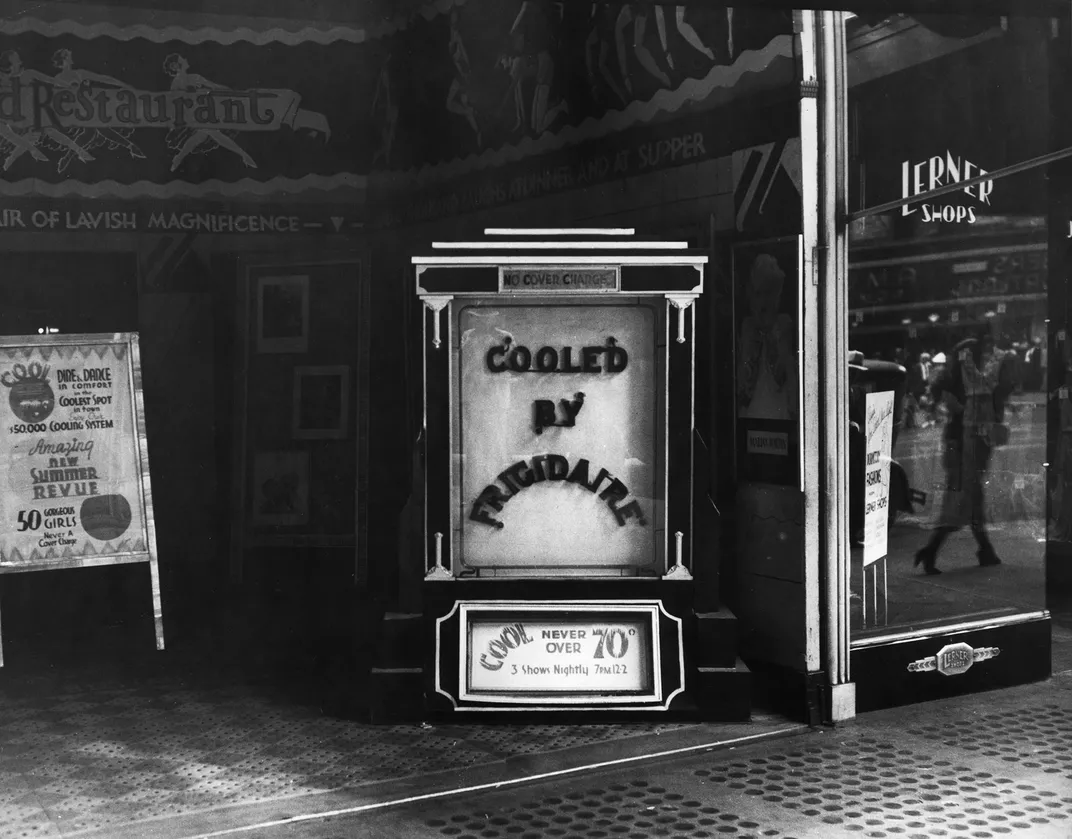The Unexpected History of the Air Conditioner
The invention was once received with chilly skepticism but has become a fixture of American life
:focal(590x761:591x762)/https://tf-cmsv2-smithsonianmag-media.s3.amazonaws.com/filer/0a/31/0a31b964-654d-4a1c-acc9-2a3af673e91b/gettyimages-96738310.jpg)
Working inside an office during a heatwave in June. A dinner party in July. Buying chocolate in August. If you talk to Salvatore Basile, author of the book Cool: How Air Conditioning Changed Everything these things wouldn’t have happened in America without the ability to cool the temperature around us.
“It has shaped our world to the extent that people can carry on very normal lives during the hot months, which would not have happened before,” Basile says.
Today, almost 75 percent of U.S. homes have air conditioning, but for an appliance that has become a near necessity for Americans, one of the first of its kind was surprisingly unconcerned with human comfort.
At the turn of the 20th century, humidity threatened the reputation of Brooklyn’s Sackett-Wilhelms Lithographic and Publishing Company’s high-quality color printing. After two summers of extreme heat disrupted business and caused swelling pages and blurry prints, the printing company found that a nascent cooling industry could offer help.
Willis Carrier, a 25-year-old experimental engineer, created a primitive cooling system to reduce humidity around the printer. He used an industrial fan to blow air over steam coils filled with cold water; the excess humidity would then condense on the coils and produce cooled air.
“Not only did it solve the problem, but [the cool air] started to make people comfortable, and then the lightbulb went off,” Basile says.

Even Carrier knew that his initial invention was not the most effective way to control humidity and continued tinkering with the technology. By 1922, Carrier had created the safer, smaller and more powerful Centrifugal Refrigeration Compressor, the precursor to modern air conditioning. At the Smithsonian’s National Museum of American History, one of the first practical centrifugal refrigeration compressor’s dating to 1922 is held in historic recognition of Carrier’s feat.
Experts are quick to point out that crediting Carrier as the father of modern cooling technology would overlook decades-long efforts by other inventors who used refrigeration to make hot days more productive or comfortable, though. Long before Carrier was even born, University of Glasgow professor William Cullen evaporated liquids in a vacuum thus creating refrigeration technology as early as 1748.
More than 100 years after that, John Gorrie, a Florida doctor, used a small steam engine to cool air so that his patients suffering from tropical illnesses could be more comfortable. Gorrie called his invention an “ice machine.” New machinery that could produce cool temperatures would seem like an exciting proposition during the Industrial Revolution, but Gorrie’s efforts to patent and popularize his invention were thwarted. Northern icemakers who profited from shipping ice to the South lobbied against Gorrie and benefited from a public skeptical of the artificially cooled air produced by Gorrie’s ice machine.
“That system was so revolutionary that he died penniless. He simply couldn’t get anyone to believe that it worked,” Basile says.
/https://tf-cmsv2-smithsonianmag-media.s3.amazonaws.com/filer/cd/77/cd77727a-3df2-4d5c-afec-a5d5cec64a0b/gettyimages-515176272.jpg)
And while Americans had long built fires inside their homes to keep warm for centuries, the idea of a cooling system was a completely different beast. The Smithsonian’s Peter Liebhold says efforts to control one’s environment also raised moral questions.
“There was this notion that trying to control the environment was going against God’s will,” says Liebhold, a curator in the division of work and industry at the National Museum of American History.
But air conditioning was slowly gaining acceptance and Carrier was making inroads. Maybe the world was just hot and ready for relief, but the young, charismatic engineer proved successful as an evangelist for the cooling industry. Basile writes that unlike many Americans in the early 1900s, whose “unbendingly Victorian” attitudes were rattled by the turn-of-the-century’s explosion of new machinery and technology, Carrier was a recent engineering graduate eager to rely on emerging science and mechanics and the business world was ready.
Manufacturers of everything from leather to macaroni were acutely aware of how changing weather conditions threatened their product, and Carrier’s equipment garnered more interest with enthusiastic press coverage. In the summer of 1906, the publication Louisiana Planter and Sugar Manufacturer wrote that “the hot summer days now prevailing make one wonder why ventilation with cool currents has not been thoroughly well exploited before these days.”
While air conditioning was taking the industrial sector by storm, it was the movies that managed to introduce the general public to cooled air.
Nickelodeons had long offered cheap entertainment to the public, but the small, dark, enclosed spaces were known for smelling of stale air and sweat. In an effort to seek the patronage of middle and upper class viewers, Carrier’s technology soon became a popular feature in movie theaters.
“The centrifugal compressor that Carrier designed helped make movie theater cooling pretty much universal around the United States,” Basile says. “Around 1919, there were several exhibitors who made cooling machinery for moviehouses and this was a revolution.”
It wasn’t until the mid-20th century, when the country was eager to emerge from the shadow of war and embrace a new vision of prosperity, that air conditioning became a fixture of American households.
“The 1950s was a time for keeping up with the Joneses,” says Basile.
In 1945, Life magazine published a four-page spread about air conditioning, entitled “Air Conditioning/ After the War it Will be Cheap Enough to Put in Private Homes.” The technology was described as a prewar luxury that was being manufactured in large quantities and sold at a moderate cost in the postwar mass market.
Today, a U.S. household is more likely to have central air conditioning or a window unit than it is to have a dining room, garage or even a dishwasher. For Liebhold, the rapid proliferation of the air conditioner and its move from public spaces to private residences in the mid-20th century long before it did in other countries speaks to how “creative disruption is built into American ideology.”
The technology that was initially envisioned as a tool to enhance industrial productivity is now a near necessity for American homes and transportation. Though humans in hot climates around the world have cooled themselves with fans, fountains and natural ventilation systems for centuries, only the U.S. consumes energy for air conditioning to the extent it does—more than the rest of the nations in the world combined. In 2016, the United States used about 616 terawhatt hours (TWh) of electricity for air conditioning, while the European Union with a population one and a half times larger, used just 152 TWh for the same purpose.

The numbers are even more stark when comparing the United States to lesser developed nations. India, whose population is about four times larger and has higher average temperatures than the United States, uses about 91 TWh of electricity for air conditioning.
“Americans have a predilection to be willing to change nature and make it work for them rather than to be one with it,” Liebhold says.
With the existential threat of climate change and rising temperatures overall, the increased demand for energy creates challenging questions about the environmental cost of comfort, and in extremely hot climates, survival.
In a world where business is conducted in sealed office buildings, and air conditioners are becoming increasingly common globally, Basile believes chances of a widespread cutback on the use of air conditioning are slim.
Liebhold, a historian of technology, agrees that when it comes to debates on energy usage, he sees a higher chance of cleaner, more efficient technology addressing environmental concerns than people cutting back on air conditioner use altogether.
“I’m very optimistic about technology,” he says. “It’s not to say all technology is good, but that we tend to find technological solutions for technological problems.”
/https://tf-cmsv2-smithsonianmag-media.s3.amazonaws.com/accounts/headshot/Headshot_HaleemaShah.jpg)


/https://tf-cmsv2-smithsonianmag-media.s3.amazonaws.com/accounts/headshot/Headshot_HaleemaShah.jpg)